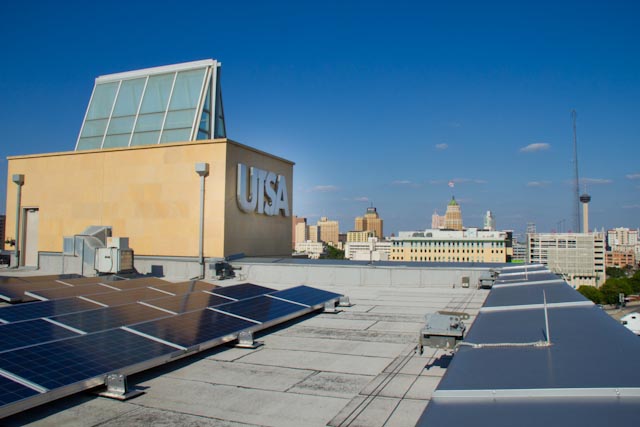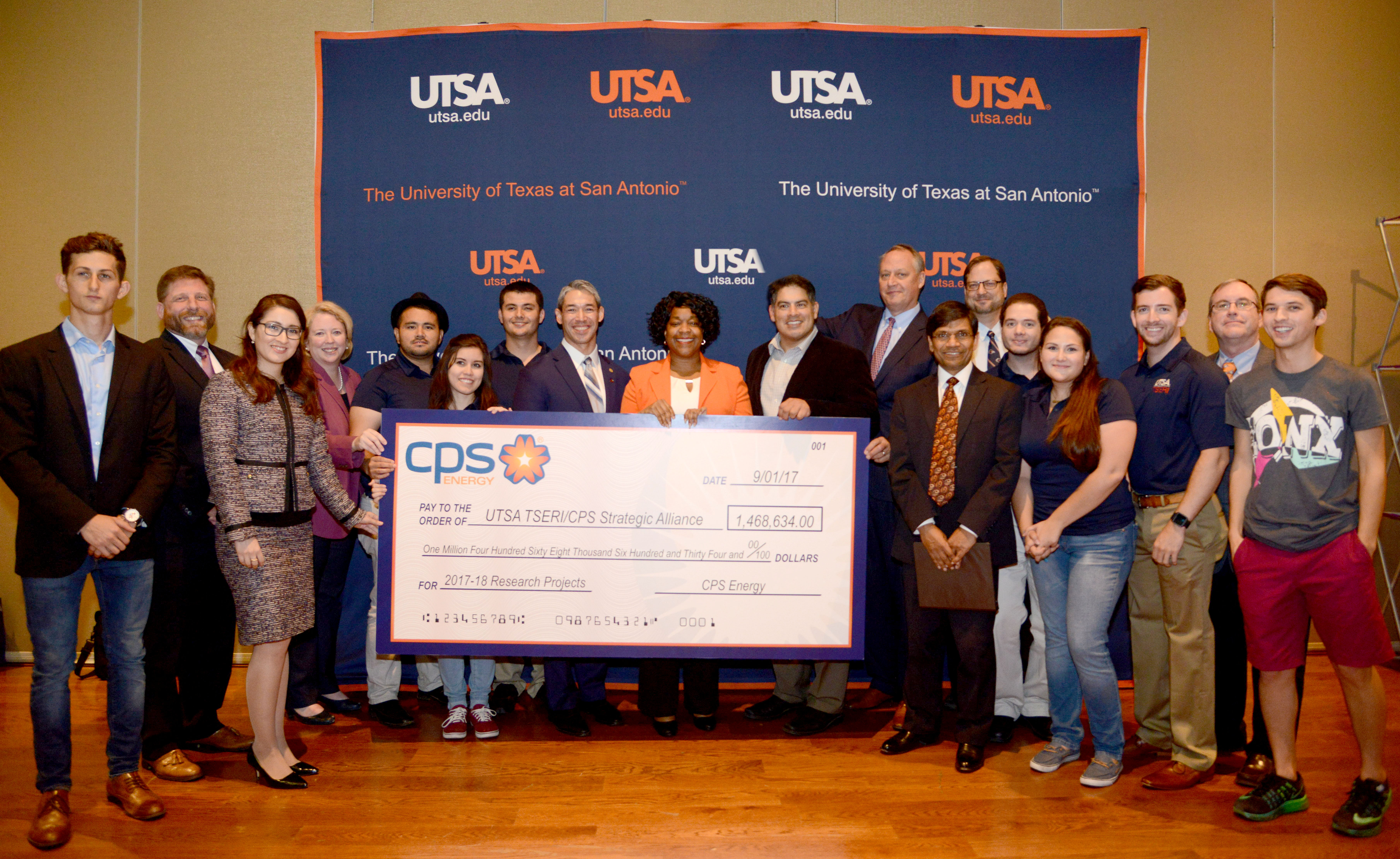TSERI/CPS 2017 Projects

A Proactive Energy Management System (PEMS) for Integrated Control of Battery Energy Storage System (BESS) and Solar-Powered Buildings

Research Goals: This project aims to develop a control and communication platform by integrating grid signals, solar energy generation, battery energy storage, and building energy management system.
Research Description: With the increasing penetration of distributed energy resources such as photovoltaic (PV) systems, electric vehicles (EVs), and battery energy storage systems (BESS) at the individual building level, electrical load patterns becomes uncertain and variable, contributing to grid instability and energy waste. At the grid level, the introduction of renewable energy also makes the power system status more uncertain and variable, which requires more ancillary services to ensure system supply adequacy and reliability. Thus, the need for ancillary service provisions will increase substantially, and utility will require more flexible loads.
Harvesting Mechanical and Thermal Energy from Roadways

Research Goal: The proposed study aims to refine and implement an innovative system for harvesting energy from roadways. Its goal is to refine and implement a novel robust self-powered Hybrid Integrated Sensing and Energy Conversion (HISEC) system for monitoring roadway structural conditions and traffic.
Project Description: A group of researchers at UTSA civil and electrical engineering departments developed two prototypes to harvest energy from roadways and convert it into electric power. The first prototype uses the mechanical strain energy induced by traffic and the second uses the elevated asphalt pavement heat. Both prototypes have a conversion module to convert the energy into a stream of electric voltage that can be stored in a capacitor. The experimental and field investigations suggest that the produced power is sufficient for illuminating a low-watt LED. The prototypes are completely embedded in the pavement and take no public space.
Current prototype design allows producing 1.5 watt from each passing truck (with 20kN axle wheel) and 15 mWatt per square inch of pavement during day time. With the growing traffic volume and elevated atmospheric temperature in San Antonio the energy resources will continue to be vastly available for harvesting. Tapping into these resources and scaling up the prototypes can provide new alternatives to support CPS effort to supplement peak hour demands and future need. One of the environmental advantages of the prototypes is to absorb pavement heat and reduce its temperature yielding to cooler surrounding air and neighborhood zones.
Smart Grid Security and Attack Resiliency: A Forensics-driven Approach

Research Goal: This project will integrate forensic-driven requirements into the smart grid systems, including the technology design and development phases, if amenable to the local utility. The goal of this framework is to enhance CPS Energy’s incident response and (forensic) investigation capabilities.
Project Description: The dangers of threats to smart grid networks are evidenced by recent attacks (e.g., on a German steel mill that destroyed a blast furnace) and attempts (e.g., attempted hacks on U.S. electric power utilities to steal confidential grid information and launch terrorist attacks). When a security incident occurs, organizations usually respond by conducting an investigation to establish the root cause of the incident and how it could be prevented in the future. In order to examine the causes of an incident, investigators rely on the residual data from systems, affected by the incident and supporting systems. However, such data might not always be available for a variety of reasons that include short data retention times, a lack of extraction capabilities, and the costs associated with conducting such investigations. As a result, incident handlers may not be able to identify the causes of the security incident with any degree of confidence.
Using Machine Learning to Improve Intra-hour Prediction of Solar Irradiance and Ramp Events in the CPS Microgrid at JBSA

Research Goal: Provide day-ahead and real-time forecasting capabilities to the microgrid management system to enhance the management of site-specific solar and energy storage dispatching.
Project Description: The UTSA SkyImager is a low cost, edge computing, all-sky imager that provides intra-hour solar irradiance forecasts which are used to predict power output from PV arrays. The SkyImager hardware is designed around a Raspberry Pi single board computer with a fully programmable, high resolution Pi Camera, housed in an all-weather enclosure. Software to process the images and make forecasts is written in Python and utilizes the open source Open Computer Vision library. As part of the Department of Energy INTEGRATE project, the SkyImager was deployed at the National Renewable Energy Laboratory (NREL) in 2015, where it successfully collected terabytes of image data. In fall of 2016, UTSA deployed a second SkyImager, a WXT520 Vaisala weather station, and a pyranometer as part of the CPS Energy MicroGrid at Joint Base San Antonio. The UTSA equipment supplied data and forecasts to the Siemens Micro Grid Management System (MGMS) and the Battery Management System.
Sustainability and Climate Change Adaptation Plan

Research Goal: Develop a sustainability and climate change adaption plan for the City of San Antonio.
Project Description: A Climate Action and Adaptation plan (CAAP) is a strategy document that outlines a collection of measures and policies that reduce GHG emissions based upon a reduction target, as well as evaluates climate-related impacts and provides strategies to adapt and build resilience. Using the GHG emissions inventory as the foundation, a CAP defines GHG reduction goals based on local priorities for reducing emissions and provides the guiding framework for achieving those goals. The CAAP will cover the community sector, as well as municipal operations.

Institute News
Sort by Title
- Robotic Solar Tracking System
- SCO2 Power Generation for Renewable Energy Extraction
- Secure, Resilient and Smart Grid
- TSERI/CPS 2017 Projects
- Energy Efficiency Online Outreach
- Wind Energy Research
- UTSA Solar Forecasting Research
- Eagle Ford Shale
- STEM Learning through Gaming
- Energy Conservation & Residential Consumption
- Energy Water Nexus
- Electrification of Transportation
- Carbon Capture, Storage, Sequestration and Reutilization
- UTSA SmartLiving Campus
- Large Scale Photovoltaic Integration
- UTSA Installation of Distributed Solar Energy Resources








